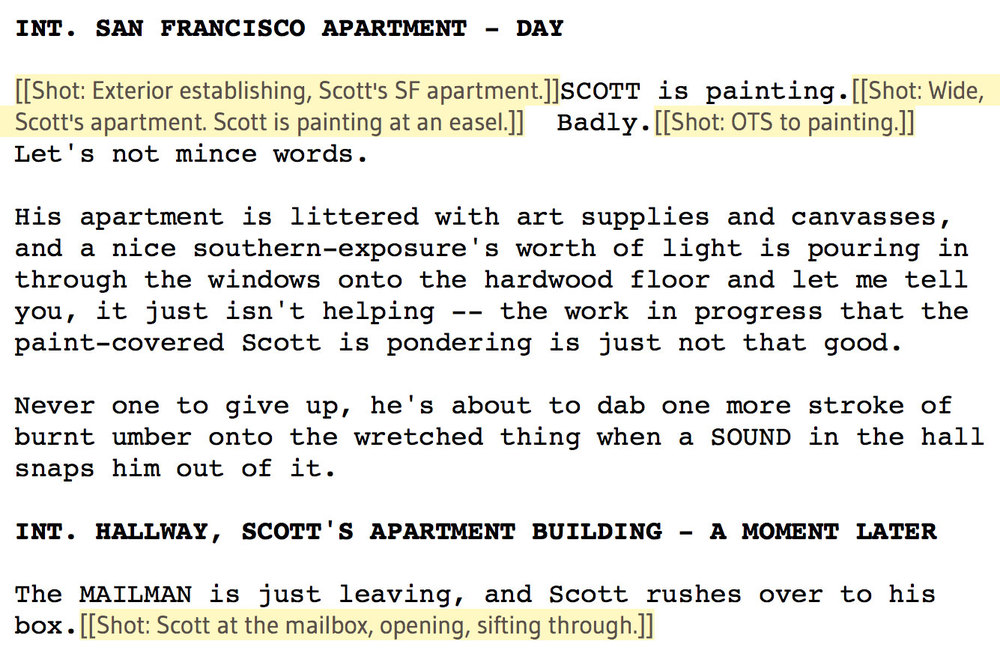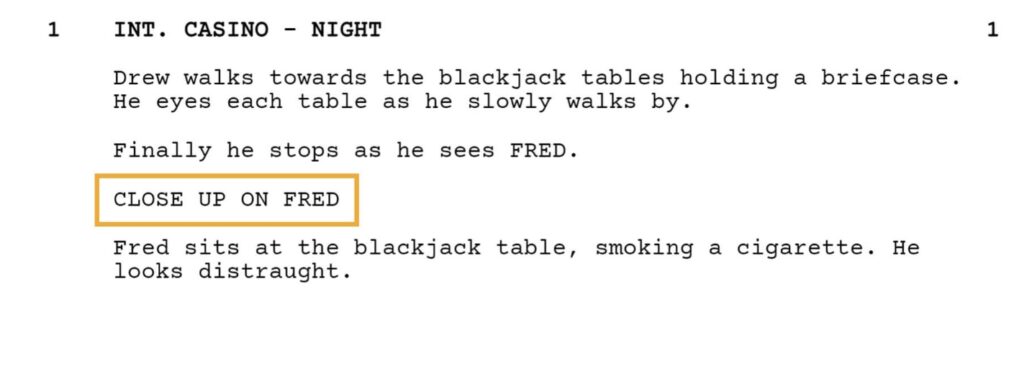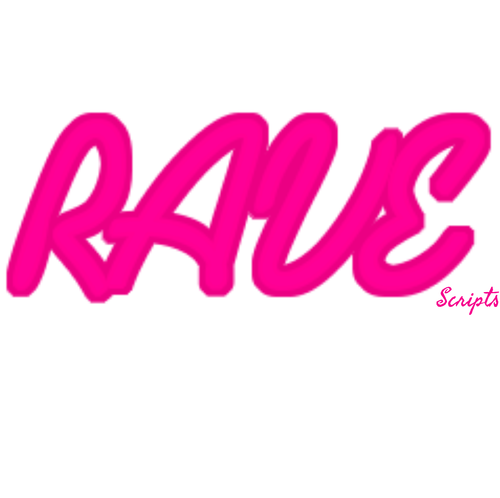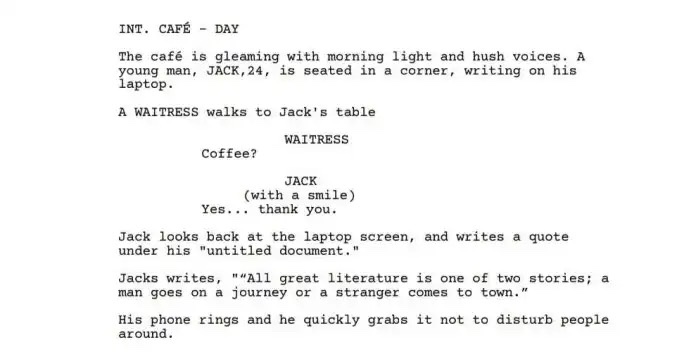Do you know how to write a shot in a screenplay? If you’re a budding filmmaker looking to break into the industry, writing your own screenplay is an incredibly rewarding task. But what does it take to write a great story that effectively captures the audience’s attention? Writing effective shots in scenes can be difficult to master but that doesn’t make it impossible. In this article we will discuss the basic tenets of how to write a shot in a screenplay so you can learn how to create engaging scenes for your next cinematic masterpiece.
Understanding The Importance Of Shot Description In Screenwriting

Understanding the importance of shot description is important in knowing how to write a shot in a screenplay. In screenwriting, it’s crucial for effectively communicating a story to both the reader and eventual audience of a film or TV show. Shot descriptions are used to convey the visual elements of a scene, including the characters, settings, and actions taking place on screen. These descriptions provide the reader with a sense of how the scene will look and feel on the big or small screen.
Moreover, shot descriptions are a key tool for a screenwriter to convey the tone, atmosphere, and mood of a scene. They also help to convey the character’s inner thoughts, emotions, and motivations. A well-written shot description can also help the reader to visualize the scene in their mind, making the story more engaging and immersive.
In addition to this, shot descriptions can also be used to suggest camera angles and movement, which can enhance the story and create a more cinematic experience for the audience. This can include close-ups, wide shots, panning, and tracking shots, among others. These techniques can help to create a sense of tension, intimacy, or distance between characters, adding to the overall emotional impact of a scene.
Furthermore, shot descriptions are also important for helping to guide the director and cinematographer in the filming process. They can provide a clear understanding of the visual elements that the screenwriter intended for the story, helping to ensure that the final product stays true to the writer’s vision. It’s also important for the screenwriter to be aware of the technical aspects of the shot and how it can be achieved in the filming process.
Shot description is an essential aspect of screenwriting. It is a powerful tool that can be used to convey visual elements, tone, atmosphere, and mood, while also guiding the director and cinematographer in the filming process. It is important for screenwriters to understand the importance of shot description and to use it effectively in their writing to create a more immersive and engaging story for the audience.
Creating A Clear And Concise Shot Description

Creating clear and concise shot descriptions in a screenplay is important in knowing how to write a shot in a screenplay because it helps to effectively communicate the visual elements of a scene to the reader and eventual audience of a film or TV show.
Clear shot descriptions provide the reader with a sense of how the scene will look and feel on the big or small screen, which makes the story more engaging and immersive.
They also help to convey the character’s inner thoughts, emotions, and motivations, and can be used to suggest camera angles and movement that enhance the story.
Additionally, clear and concise shot descriptions can also guide the director and cinematographer in the filming process, helping to ensure that the final product stays true to the writer’s vision.
Therefore, creating a clear and concise shot description is crucial for effectively communicating the story to the audience.
Here are some ways to accomplish creating clear and concise shots:
- Keep it simple: Avoid using complex or technical language in your shot descriptions. Instead, use simple and clear language that can easily be understood by anyone reading the screenplay.
- Be specific: Use specific details to describe the visual elements of a scene, such as the characters’ positions, the setting, and any props or special effects. This will help the reader to clearly visualize the scene in their mind.
- Use active verbs: Use active verbs to describe the actions taking place in a scene. This will make the shot description more dynamic and engaging for the reader.
- Incorporate camera angles and movement: Use specific camera angles and movement to enhance the visual elements of a scene. For example, a close-up can be used to create intimacy between characters, or a tracking shot can be used to convey a sense of movement.
- Be consistent: Be consistent in your use of shot descriptions throughout the screenplay. Use a consistent format and style for all of your shot descriptions, so that the reader can easily understand and follow the visual elements of the story.
In summary, clear and concise shot descriptions are essential for effectively communicating the visual elements of a scene to the reader and eventual audience of a film or TV show. By keeping it simple, being specific, using active verbs, incorporating camera angles and movements, and being consistent, screenwriters can create shot descriptions that are easy to understand and help bring the story to life on the screen.
Using Camera Angles And Movement To Enhance The Story

Camera angles and movement are needed to know how to write a shot in a screenplay because they can be used to enhance the story by creating a sense of intimacy, providing context, following the action, conveying motion and tension, showing the layout of a location, conveying a character’s perspective, and adding visual interest. By understanding the different camera angles and movements available and how they can be used to enhance the story, screenwriters can create a more dynamic and visually interesting film or TV show.
Use Close-Ups To Create Intimacy Between Characters
Close-ups can be used to show the facial expressions and emotions of a character, which can help to create a sense of intimacy and connection between characters.
Use Wide Shots To Establish The Setting
Wide shots can be used to establish the setting and provide context for the scene. They can also be used to show the relationship between characters and their surroundings.
Use Panning Shots To Follow The Action
Panning shots can be used to follow the action and movement of characters within a scene. This can help to create a sense of movement and energy.
Use Tracking Shots To Convey A Sense Of Motion
Tracking shots can be used to convey a sense of motion and movement, and can help to create a sense of tension or urgency.
Use Overhead Shots To Show The Layout Of A Location
Overhead shots can be used to show the layout of a location and provide an overview of the scene.
Use Point-Of-View Shots To Convey The Character’s Perspective
Point-of-view shots can be used to convey the perspective of a character and show what they are seeing and experiencing.
Use A Combination Of Different Camera Angles And Movements
Combining different camera angles and movements can help to create a more dynamic and visually interesting scene. It can also help to convey different emotions and moods.
Utilizing Shot Transitions to Smoothly Connect Scenes
Shot transitions are an important tool in knowing how to write a shot in screenplay for film and video editors to smoothly connect scenes and guide the viewer’s attention. There are several types of shot transitions that can be used, each with a specific purpose and effect.
The cut is the most basic and common type of shot transition. It is simply a change from one shot to another. Cuts are used to move quickly between different locations or to change the focus of the scene. They can also be used to create a sense of urgency or to indicate the passage of time.
The dissolve is a shot transition that blends one shot into another. It is often used to indicate a passage of time or a change in location. It can also be used to connect two shots that have a similar visual or emotional theme. The dissolve creates a smooth and seamless transition between scenes, making it a popular choice for many editors.
The wipe is a shot transition that uses a moving element to move one shot out of the frame and reveal the next. This transition can be used to indicate a change in location or to signal a new scene. It can also be used to add a sense of movement or to create a sense of tension.
The fade is a shot transition that gradually dims the current shot and brings up the next. It is often used to indicate the passage of time or to create a sense of finality. The fade can also be used to create a sense of mystery or to transition between dream sequences.
Shot transitions are a powerful tool for film and video editors to connect scenes and guide the viewer’s attention. The cut, dissolve, wipe, and fade are all common types of shot transitions that can be used for a variety of purposes and effects. It is important for editors to consider the emotional and narrative context of the scene when choosing the appropriate transition.
Incorporating Shot Description Into Overall Screenplay Formatting
Incorporating shot descriptions into overall screenplay formatting is an important aspect of visual storytelling. Shot descriptions should be used to set the visual scene for the reader, convey the tone and atmosphere of the scene, and convey the movement and geography of the scene.
They should be placed at the appropriate point in the screenplay, typically at the beginning of a scene, before the dialogue or action begins. They should be written in all caps, and separated from the rest of the dialogue or action with a line space.
It is important to keep shot descriptions brief, consistent, and relevant to the story, but not overuse them as too many shot descriptions can slow down the pacing. Shot descriptions should be used in conjunction with other elements such as dialogue, action, and character descriptions to create a well-rounded and engaging story.
- Use proper formatting for shot descriptions. This typically includes writing the shot description in all caps and separating it from the rest of the dialogue or action with a line space.
- Place shot descriptions at the appropriate point in the screenplay. Typically, shot descriptions should be placed at the beginning of a scene, before the dialogue or action begins.
- Keep shot descriptions brief and to the point. Avoid including unnecessary details and keep in mind that the shot description should serve to set the visual scene for the reader.
- Use shot descriptions to convey the tone and atmosphere of the scene. This can include things like the time of day, the weather, and the lighting.
- Use shot descriptions to convey the movement and geography of the scene. This can include things like the camera angle and movement, as well as the positioning of the characters within the frame.
- Incorporate visual elements that are relevant for the story, for example, background, props, and characters in the scene and how they are positioned.
- Be consistent in your shot descriptions throughout the screenplay. Use similar language and formatting to create a cohesive overall visual story
- Avoid overusing shot descriptions. It’s not necessary to include a shot description for every single shot in the film, and too many shot descriptions can slow down the pacing and make the screenplay feel overly detailed.
- Remember that shot descriptions are only one aspect of screenplay formatting and should be used in conjunction with other elements such as dialogue, action, and character descriptions to create a well-rounded and engaging story.
Related:


Leave a Reply